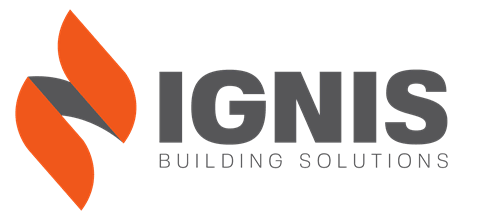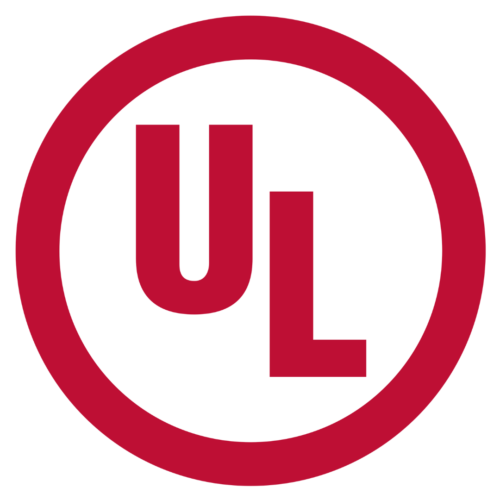CAN/ULC-S1001 is the Standard for Integrated Systems Testing of Fire Protection and Life Safety Systems.
This standard outlines the “methodology for verifying and documenting all interconnections between systems provided for fire protection and life safety functions are installed and operating in conformance with their design criteria.”
This standard outlines the “methodology for verifying and documenting all interconnections between systems provided for fire protection and life safety functions are installed and operating in conformance with their design criteria.”
To better understand this fire safety standard, it’s important to know the definition of Integrated Systems according to the CAN/ULC-S1001 document.
Integrated Fire Protection and Life Safety Systems: A combination of two or more fire protection and life safety systems, which may or may not be physically connected with one another, but that are designed to operate together to achieve an overall fire
protection and life safety objective.
The Canadian Federal Government passed Integrated Systems Testing as law in 2020 to ensure all fire protection and life safety systems work together. Prior to this, all systems were tested individually (which they still are as well) and it was only assumed that these systems would be connected properly.
Integrated Systems Testing gives more peace of mind to the building owner that all fire protection and life systems are compliant with the applicable standards.
How does CAN/ULC-S1001 impact your project?
The Ontario Building Code requires all fire protection and life safety systems to be in compliance with CAN/ULC-S1001.
“Where fire protection and life safety systems, and systems with fire protection and life safety functions, are integrated with each other, the systems shall be tested as a whole in accordance with CAN/ULC-S1001, “Integrated Systems Testing of Fire Protection and Life Safety Systems”, to verify that the systems have been properly integrated.” (3.2.10.1.)
Planning for CAN/ULC-S1001
Prior to beginning construction, Integrated Systems Testing documentation will need to be submitted to your Authority Having Jurisdiction (AHJ). You will submit a copy of the Integrated Testing Plan, including the name of the Integrated Testing Coordinator.
This process for submitting documentation will vary by region. Check with your municipal planning department for guidance.
Prior to occupancy, the completed Integrated Testing Report and all documentation from the Integrated Systems Testing Planning Phase and Integrated Systems Testing Implementation Phase must be submitted again to your AHJ.
Existing Buildings
For existing building renovations where there is a pre-existing Integrated Testing Report, only the affected fire protection and life safety systems need to be tested and documented in the report.
For existing building renovations where there has not been integrated testing, a new Integrated Systems Testing Plan must be prepared. This must follow all the steps as a new build would in terms of what documents need to be submitted to the AHJ.
Often, building owners and operators can be faced with the challenge of finding the appropriate documentation for the systems already installed.
Another obstacle can be that the equipment might have previously functioned correctly, but no longer performs during the Integrated Systems Testing. This could be due to the length of time since installation, resulting in changes in technology or the seizing of parts. Previously installed systems could also be not properly connected to the other fire prevention systems as they were not required to undergo Integrated Systems Testing.
When working with new and existing buildings, time for equipment repairs and retesting needs to be allocated in the project plan.
Construction and CAN/ULC-S1001
Including Integrated Systems Testing in your planning saves time and money during construction. For example, a project may be completed only to result in an infraction when being inspected by the authority having jurisdiction. Deficiencies in the integrated system must be resolved in order to ensure compliance with the standard. They can cause more labour costs and push the completion date back.
Having an Integrated Testing Coordinator ensures your project has the applicable testing so your building is fully compliant with CAN/ULC-S1001. They will develop a plan to test each interconnection as it is installed, leaving room in the project timeline for any repairs and retesting.
Depending on the local building and fire codes, Integrated Systems Testing will be performed 1 year after the initial testing. Subsequent testing should be conducted at intervals not exceeding 5 years.
Planning to include Integrated Systems Testing in your project will require an initial investment, but when you consider the implications of not having these systems installed correctly, it will save you time and unexpected expense in the future.
What is the process for Integrated Systems Testing?
[1] [2] Within the CAN/ULC-S1001 standard two phases are outlined:
- Integrated Systems Testing Planning Phase
- Integrated Systems Testing Implementation Phase
It is important to note that the same company is not allowed to perform verification of the fire alarm systems in accordance with CAN/ULC-S537 AND conduct integrated systems testing on the same building/premises in accordance with CAN/ULC-S1001. This must be two separate companies.
Integrated Systems Testing: Planning Phase
During the Planning Phase, the design professionals send documentation to the Integrated Testing Coordinator detailing each interconnection between fire protection and life safety systems.
Design professionals include engineers, architects, and electricians. These professionals will send building floor plans, electrical systems, or fire protection systems to the Integrated Testing Coordinator.
Using these documents, the Integrated Testing Coordinator prepares a unique integrated testing plan for the building.
While the format of the testing plan is not mandated, there is certain information required to be in the plan. CAN/ULC-S1001 gives the guidelines for this plan and it is expected that each section is expanded upon during the testing process.
- Introduction: Background information on the building, an overview of the integrated systems being tested.
- Sequence of Operation: Cause and Effect Matrix displaying the different test outcomes and defined scenarios required to adequately test all integrated systems.
- Test Protocols and Procedures: Test methodology displaying the test instructions for individual systems and scenarios that test all systems together.
- Notifications: Notifying and coordinating all required professionals prior to the testing date, notifying all building occupants regarding the integrated testing procedure.
- Personnel Safety: Communication protocols in case of emergency, safety protocols to be distributed to all parties involved, list of any possible hazardous conditions, equipment, chemicals, or gases.
- Phased Occupancies: Considerations if the building is currently occupied.
- Pre-Testing Documentation: Documentation from design professionals and installing contractors that all systems are ready for integrated testing, documentation for pre-completed test results, building pre-check by the Integrated Testing Coordinator to ensure all systems are in working order.
- Testing Forms: Pre-testing actions (meetings, documents, reviews, etc.), records of testing results, re-testing of deficiencies.
- Ongoing Integrated Systems Testing: Plan must be prepared for implementation in future testing.
Integrated Systems Testing: Implementation Phase
During the Implementation Phase, the following documents must be submitted to the Integrated Testing Coordinator prior to beginning any system testing.
- Confirmation from design professionals that acceptance testing has been conducted on fire protection and life safety systems and they are all compliant
- Confirmation from installing contractors that fire protection and life safety systems have been installed in accordance with the design
- Confirmation from verifying parties that all fire protection and life safety systems have been installed in accordance with the design
- Approval of electrical installations from the Electrical Safety Authority
- Approval of installation from the Safety Code for Elevators and Escalators
- Confirmation of implementation of occupant notification procedures
- Confirmation of implementation of alternate measures for ensuring occupant safety
These documents must all be in good order for the Integrated Testing Coordinator to begin the systems testing. This means that each form or certification is fully completed and signed by the required parties, and all inspections are documented properly.
During the Integrated Systems Testing, the Integrated Testing Coordinator will perform various scenarios outlined in the Testing Plan. Performing multiple scenarios will verify that the fire protection and life safety systems are interconnected properly.
Design professionals, installing contractors, and verifying parties will need to be onsite during the Integrated Systems Testing. As so many professionals are required onsite, it can often take weeks to determine a testing date that accommodates all schedules.
Late notification of the Integrated Systems Test can result in costly project delays if all parties cannot attend. By including time in your project to plan and coordinate schedules, you ensure enough notice is given and room is created in the project timeline for alternate testing dates.
It is important to check your local regulations, as some municipalities require the AHJ to witness the Integrated Systems Testing. In other areas, it is required to submit the completed testing documentation to the AHJ for approval.
Who is involved in Integrated Systems Testing?
The integrated testing standard is referenced in the National Fire Code and gives ownership to the building owner.
In accordance with section A-6.8.1.1.(1) in the National Fire Code,
“Building owners must ensure that fire protection and life safety systems and their components (i.e. fire alarm systems, sprinklers, standpipes, smoke control, ventilation, pressurization, door hold-open devices, elevator recalls, smoke and fire shutters and dampers, emergency power, emergency lighting, fire pumps, generators, etc.), including their interconnections with other building systems, are functioning according to the intent of their design.”
While it is the responsibility of the building owner to ensure the testing is done, it is truly a combined effort to make the Integrated Systems Testing a smooth process.
In accordance with CAN/ULC-S1001, an Integrated Testing Coordinator (ITC) who can competently perform this testing is required to organize the process.
CAN/ULC-S1001 states the ITC “shall be knowledgeable and experienced in the design, installation, and operation of fire protection and life safety systems, and the fire protection and life safety functions of building systems.” (4.2.1)
The Integrated Testing Coordinator relies on other professionals to ensure a successful Integrated Systems Test.
These individuals typically include:
- Building Owners
- Building Operators/Property Managers
- Authorities Having Jurisdiction
- Design Professionals (Engineers, Architects, Electricians)
- Installing Contractors
- Verifying Parties
- Occupants
Ignis Building Solutions has UL Certified Inspectors available to assist with every stage of the CAN/ULC-S1001 Integrated Systems Testing process.
Contact Us to discuss your project

